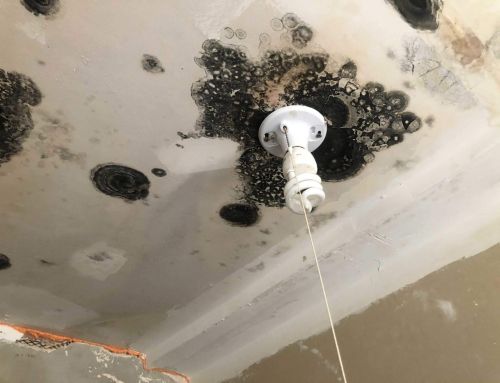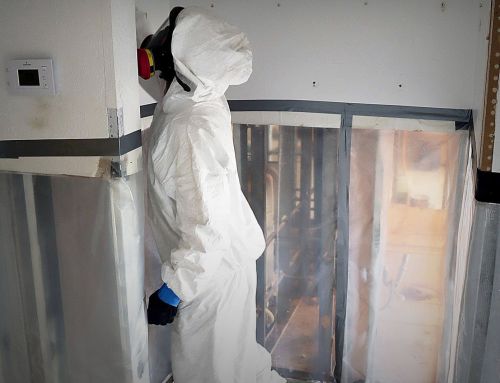Mold in your environment is no joking matter. It is unsightly, causes odors, and destroys so much around your home. There are a lot of discussions online about the health implications of mold exposure. Consider what science has to say about the effects of exposure to mold and what you can do to prevent the problem.
Degree and Duration of Exposure
Before looking at the medical problems linked to mold exposure, it’s important to understand the variables affecting the issues you may experience. These variables are the degree and duration of exposure.
Degree refers to the quantity of mold spores you’ve encountered. The larger the issue in your home, the more significantly it will impact your health. How long your issue has been developing will also determine your degree of exposure.
Mold is a living organism that releases spores to continue growing. This means that if the environment is conducive, it can easily spread, which causes more mold spores to fill the air. Therefore, dealing with mold early is critical to reducing the degree of your exposure.
In addition to the degree, the duration of your exposure is also influential. Just a couple of minutes may only cause a little irritation if it has any effect on you at all. However, you’ll experience a greater impact on your body if you spend several hours or days in the environment.
For all the medical issues you may experience, remember the first course of treatment is resolving the mold issue. As long as you have continued exposure, you can expect the reactions to continue, prolonging your symptoms and likely causing them to progress.
Allergic Rhinitis
The most common medical issue associated with mold is a simple allergic reaction. Simple does not necessarily mean mild, but rather that it’s simple to treat. This is known medically as allergic rhinitis.
It manifests as inflammation in the nasal passages caused by breathing in mold spores. This inflammation makes your nose feel as though it’s congested, even if you have no drainage. You may then experience drainage, both through the nose or postnasal drip. A headache, sore throat, itchy eyes, and loss of smell and taste are also common.
The severity of your symptoms depends on the severity of your reaction. This can be a function of your genetics and how well your immune system is functioning.
Asthma Triggers
Asthma is a condition marked by the constriction of the bronchial passages. This constriction can come from inflammation alone. It can also come from producing excess mucus.
Some doctors suggest that asthma is simply a severe form of an allergic reaction, in that all people suffering from asthma also suffer from allergies. It makes sense that allergens such as mold would be a trigger for asthma as well.
Just as with allergic rhinitis, the degree of your exposure and the duration of that exposure may affect how much it triggers you. For people with severe asthma, even very brief exposure to a minimal amount of mold may be enough to trigger an asthma attack. It’s important to take care of any amount of mold quickly if anyone in your home suffers from asthma or if you have a family history of the condition.
Allergic Bronchopulmonary Aspergillosis
Mold is actually a fungus, with various strains growing inside homes. The strain Aspergillus causes allergic bronchopulmonary aspergillosis. When you break down this term, it’s an allergic reaction that takes place in the lungs when the spores from this particular strain get into them.
The symptoms experienced are similar to those from asthma, and they may include coughing, wheezing, shortness of breath, or worsening asthma symptoms. If the fungus starts multiplying in your lungs, it’s called invasive aspergillosis. You may experience fever, chest pain, and potentially life-threatening symptoms if it spreads past your lungs.
If you think this may be an issue, consult a doctor. They can take X-rays, do blood tests, or even take a sample of your lung fluid for testing. If they confirm the infection, you may receive treatment with corticosteroids, either oral or inhaled, and antifungal medications.
Sinusitis
The common name for sinusitis is a sinus infection. In application, it’s an inflammation of the tissues lining the sinuses. Sinusitis is caused by a blockage of the nasal passages, causing the thin mucus the sinuses produce to remain instead of draining. This fluid becomes the perfect breeding ground for bacteria.
The normal allergic reaction to mold exposure causes inflammation in the sinus passages in addition to higher mucus production. The combination of the two makes for the perfect setup for developing a sinus infection.
Symptoms include yellow or green discharge from your nose, pressure around your nose, eyes, and forehead, fever, and fatigue. Sinus infections may resolve on their own with plenty of fluids and over-the-counter decongestants. However, if you continue to have symptoms for more than 10 days, consider consulting your doctor. They may prescribe antibiotics to help treat the infection.
Hypersensitivity Pneumonitis
Hypersensitivity pneumonitis is an allergic reaction causing inflammation of the lung tissue. In about 95% of cases, this is an acute condition that resolves within a few days. However, in the rare 5% of victims, this condition may become chronic, where it repeats, or symptoms don’t subside at all. This causes scarring called pulmonary fibrosis, which inhibits proper lung function.
Symptoms are often flu-like and include fever, chills, body aches, headache, coughing, shortness of breath, and fatigue. If you think you’ve been exposed to an allergen, consult your doctor. The common treatment is a prescription steroid, which helps to relieve pulmonary inflammation.
Mold and Young Children
Mold is especially problematic for young children. There is some evidence that mold exposure in young children may trigger life-long asthma. Some theories suggest that children prone to this catalyst are genetically predisposed to asthma.
Additionally, some molds such as Stachybotrys Chartarum, or black mold, release mycotoxins, which then attach to the spores. When these enter the brain of a developing body, they can cause neurological symptoms. These may include memory impairment, anxiety and depression, tremors or shaking, cognitive dysfunction, disorientation, dizziness, numbness, and slow reflexes, just to name a few.
Mold is a serious issue in your home, especially if you have children. Take the necessary steps to prevent mold, and deal with it before it becomes a significant problem.
Preventing and Dealing With Problematic Mold
The best treatment for mold is prevention. Mold spores are in the air around us, both outside and inside your home. The goal is to prevent those spores from taking hold and proliferating.
The easiest form of prevention is controlling your indoor humidity levels. The EPA suggests the ideal relative humidity is between 30% and 50%. Beyond that, consider adding additional filtration to your home’s HVAC system to remove more spores before they can grow.
If you do have mold issues in your home, it commonly starts in laundry that was left moist, such as towels after a shower. However, if it’s in your paint, on your furniture, or in your flooring, it’s best to have it professionally eradicated. Professionals know how to isolate the issue and remove it without allowing more spores to spread throughout your home.
People in Chicago and throughout Illinois, Texas, Florida, Georgia, and Wisconsin have trusted Pur360 for their mold remediation needs since 2006. Our award-winning technicians provide mold testing and eradication services together with odor elimination and ultraviolet sanitation. Call today to schedule your mold removal appointment with one of our professional and friendly teams.



